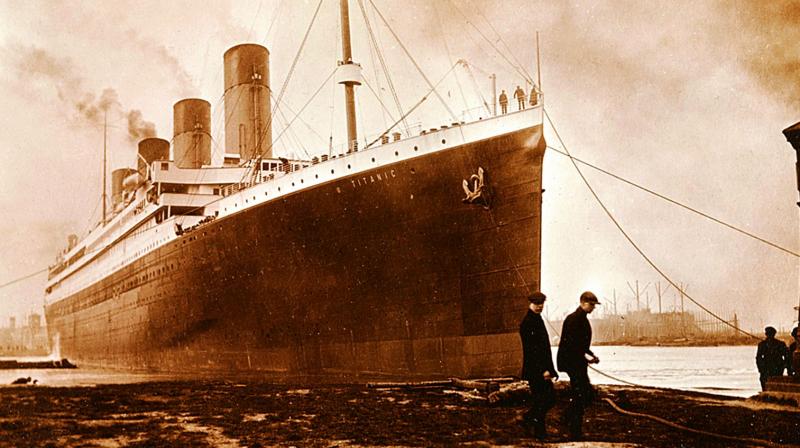New theory: The secret fire that sank Titanic
A much-ignored version of the events from the night of April 15, 1912, resurfaces thanks to this photo of the famous ship.

It remains one of the most tragic maritime disasters. Over 1,500 lives lost as a luxury ocean liner struggled to win against the icy North Atlantic. For 105 years, we thought an iceberg was responsible for the sinking of the Titanic. But new evidence, found in a photo recovered from an attic in England, reveals a 30-foot-long scar (circled right), most likely caused by a fire that had started in the ship’s coal bunker.
Journalist Senan Moloney, from the Irish Daily Mail, writes about the blaze that eventually caused the Titanic to come to rest 12,500 feet below the surface of the sea.
“The fire has always been known about. The story first emerged when rescued crew landed in New York in April, 1912, and the New York Tribune reported that “every stoker interviewed declared that the Titanic was afire” during her maiden voyage. It was said to have played “no small part” in the sinking. Since the British Inquiry reported, everyone accepted its claim that the fire did not play a major part - even though the inquiry also denied that the ship broke in two (she did) and claimed her sinking was caused by a 300-ft gash made by an iceberg. But sonar imaging of the wreck on the sea floor shows there was no such long gash. It had to be something else that caused her to sink in so short a time — two hours and 40 minutes.
The blaze began spontaneously in a coal bunker which was the size of a three-storey house. It was first detected in Belfast, yet thermodynamics expert Dr Guillermo Rein of Imperial College London tells me it could have been there for weeks. It blazed all through the delivery voyage from Belfast to Southampton and was only tackled after leaving Southampton on the maiden voyage. They probably did not want to draw attention to it during the inspection, over three days, by the Board of Trade marine inspector, Maurice Clarke, who had the power to withhold her passenger-clearance certificate. He gave her permission to sail, but later told the British Inquiry there had been a fire that had been concealed from him. The fire reached temperatures of up to 1,000 Celsius according to Dr Rein.
That intense temperature was needed to produce the classic W-shaped corrugation of the ship’s bulkhead wall he produced in a computer model before it was pointed out to him that evidence of such corrugation had been described by an eyewitness in the year 1912, leading fireman Fred Barrett.
Given that temperature, we turned to metallurgist Dr Martin Strangwood of the University of Birmingham, and he said it would have changed the properties of the steel they were using and robbed the bulkhead of 75 per cent of its strength.
Also, there will be resistance to this latest development. But there is photographic proof of physical anomaly to the hull, which science now says could have been caused by the fire we know to have existed, because surviving fireman had already blabbed about it on landfall. Since the documentary (on Channel 4 in the UK), not a single person has come forward to offer an explanation for the mark on the ship. It is not a reflection or shadow, or some phenomenon local to Belfast. It is an inherent flaw on the maiden voyager, and let people use the evidence of their God-given eyes!
It also explains why a surviving crewman named Thomas Whiteley claimed in High Court papers in 1913 that the Titanic had gone to sea in an “unseaworthy” condition. The White Star Line settled with him out of court, and we can see him in later coverage applying to another court for the release of the funds. He later emigrated to the United States.
— The writer has been studying the Titanic intensively since there-discovery of her remains in 1985 and has written many books on the ship, and over 60 online articles.

